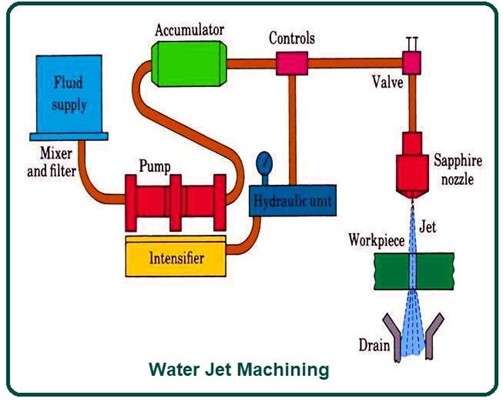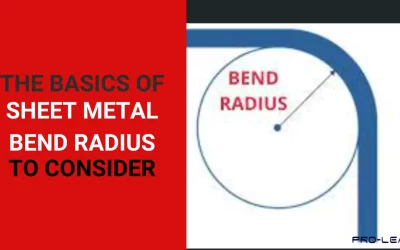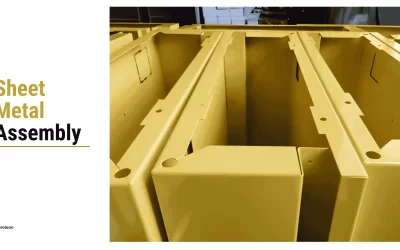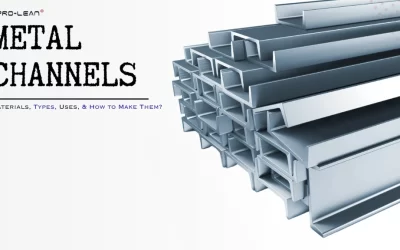Water jet processing is a “removal processing” type that cuts metal with water jets. It is used to precisely and easily deform various workpieces, such as urethane and glass, including automobile bodies and bumpers. By mixing abrasives with water, it is possible to process hard-to-cut materials such as titanium, which is difficult to cut, and to cut thick plates.
This article explains the benefits of water jet processing and “abrasive water jet,” a mixture of abrasives.
Since it does not cut oil or generate dust, it attracts attention as an environmentally friendly process!
What is waterjet processing?

Working principle of water-jet cutting
Water jet cutting is a processing method that uses water jets to cut metal. It uses the same principle as the high-pressure washer used in car washes: water is sprayed at high pressure to cut metal.
High processing energy can be generated by pushing out water compressed to 300-600MPa from a small diameter nozzle of φ0.1mm.
Water’s jetting speed reaches three times the speed of sound, and any material can be used as long as the work is wet.
A “water jet machine” is used for processing, and 3D processing by NC control and complex processing by 5-axis control is possible. Adjusting the water pressure can be applied to various processes such as deburring, polishing, and cleaning.
The principle of waterjet metal processing technology
This method of cutting metals appeared in the middle of the last century. Initially, pure water was used, but engineers added abrasive sand to the jet after a few years, greatly increasing the cutting properties.
The essence of this technology is to act on the material with a jet of water under intense pressure. Today, this technology is one of the most dynamically developing and is considered one of the best cutting methods.
Waterjet metal cutting is in no way inferior in quality to plasma; laser or mechanical cutting, in addition, such a jet is a tool that is not subject to wear. The jet diameter used is different, depending on the type of material. Usually, it is 0.5-1.5 mm. Due to the small diameter, material waste is very small.
An essential advantage of this technology is that cutting can start from any point of the product.
Any waterjet cutting machine works like this:
1. High power pumps create 3800 to 6200 bar water pressure inside the self-centering cutting head.
2. A thin jet of water is formed in the nozzle, fed into the mixer under high pressure at a speed higher than the speed of sound.
3. Water is supplied to the mixer of the apparatus from the nozzle, and the abrasive material is supplied from a unique hopper for the abrasive.
4. After mixing, water and abrasive form a cutting jet, which is applied to the cut material.
The cutting table is cantilevered or gantry and has a specially designed frame for optimum stability and freedom from distortion and vibration at high speeds.
The cutting process is controlled by specialized software, various versions of which allow cutting of any shape, depending on the capabilities of the cutting head.
What Types of Materials Can I Cut with a Water-jet?
The first and foremost consideration during the selection of water jet cutting is the type of material you need to process. To utilize this method, the material must be suitable for the process and capable of producing accurate cuts. You can use the water jet cutting technology for the following materials.
Metal & Alloys: Almost all metals and alloys are compatible with water jet cutting. The most well-known are steel, aluminum, copper, titanium, and brass. Water jet cutting can be used to cut and shape both thin and heavy metal sheets.
Plastics: Plastics such as acrylic, PVC, Delrin, Polystyrene, and many others can be processed with water jet technology. It is clean and leaves no melting or other material damage to the workpiece.
Ceramics: It can provide cutting and shaping solutions for various ceramic materials, such as tiles, porcelain, silicon carbide, alumina, and more, without cracking.
Composites: The water jet technique is ideal for cutting and shaping composite material. Other approaches, Plasma cutting, sawing, and traditional cutting, might cause the cracking of composites. Nevertheless, the water jet creates clean and precise cuts on several composites, such as fiberglass, aramid fibers, Kevlar, and carbon fiber.
The other materials are foam, rubber, stone, granite, glass, leather, and cloth.
Try Prolean Now!
The main advantages of waterjet cutting

Cold cut: Waterjet cutting is a “cold” process, as it does not require additional heat input. Water and abrasive are involved in the cutting process, the heating of the cut material remains insignificant, and there are no thermal and mechanical deformations.
Also, the advantage of a “cold” cut is the absence of burrs, warping, and scale. Therefore, the resulting products, due to the high quality of the cut, do not require preliminary preparation before subsequent operations (for example, painting or welding).
Also, cold cutting increases productivity since installing workpieces does not need to be fixed and cooled before the following technological process.
High cutting accuracy (± 0.1 mm): The combination of high pressure and a small cutting area allows you to achieve the desired result without additional operations.
Waterjet cutting is actively used to obtain a high-quality cut, for example, to get precise geometric shapes. Also, waterjet cutting can be used for various materials and non-standard types of surfaces.
High versatility in application: Waterjet cutting is one of the most versatile cutting systems today. It is used in a wide range of applications, from mass production of sheet metal parts to three-dimensional marble carving.
The allowable thickness for cut steels is 300 mm. The introduction of 5-axis cutting heads has led to rapid growth in waterjet cutting: when cutting flat parts, the head can make continuous cuts, move around the workpiece, and also make bevel cuts in the range of ±55 °.
Features of water jet machining
Since water jet machining uses water, it has various advantages that other machining methods do not have.
1. Not affected by heat
Since “water” is used, there is no heat generation in water jet vs laser and cutting processing.
Therefore, the processing accuracy is high, and it is possible to process materials vulnerable to heat.
2. The machining force can be adjusted
Since “water” is used, the force applied to processing can be adjusted by adjusting the water pressure.
Therefore, it is possible to process soft materials such as rubber, urethane, and printed circuit boards.
3. Low cost
Because it uses “water”, it is easy to maintain and the running cost is low.
4. Eco-friendly
Since “water” is used, dust is not generated during processing. In addition, ” coolant “, used in large amounts in cutting, is not required.
Principle of water jet machining
Water jet processing is divided into “water jet processing,” which uses only water, and “abrasive water jet processing,” which mixes abrasives with water.
This processing method cuts the workpiece only by high-pressure jetting of water. It is suitable for cutting soft materials such as urethane, wood, and resin.
Due to its high environmental friendliness, it is widely used in metal processing sites, food processing, and medical industries.
Eight Scenarios for Choosing Water-jet Cutting Process
We discussed the materials that can be processed with water jet cutting. Let’s explore the many scenarios where a water jet is a viable option to cut and shape the material.
1. When the materials are sensitive to heat
As previously mentioned, water jet cutting does not use intense heat and generates almost negligible heat, making it ideal for cutting heat-sensitive materials, such as certain plastics or composites.
Cutting heat-sensitive materials with other approaches, like plasma and laser cutting, can cause significant damage, such as melting at the cutting position, degradation of physical properties, and warping. Processing those materials with water-jet cutting eliminates these risks and creates clean and precise cuts.
In addition, there are several applications where the degradation of physical and thermal properties affects the functionality of parts, such as circuit boards, thermal applications, and electrically conductive parts. In this scenario, water jet cutting maintains the integrity of the material and cuts the workpiece without the risk of heat-related damage.
2. When you require complex geometries
Water jet cutting is a practical manufacturing technology because it can precisely create complex and intricate shapes. It is renowned for precise cuts along curved or arced lines, allowing it to generate circles, ovals, and ellipses.
- It can create intricate patterns for interior and decorative items and only demands a practical design (3D).
- Water jet cutting makes tiny holes, channels, cavities, and other complicated internal features possible.
- Water jet cutting can create multiple parts from a single piece of material and facilitates complex assemblies.
In conclusion, it is a good choice for many applications requiring precision and intricate shapes. Water jet machining easily maintains a tolerance of around 0.12mm (Dey, 2020).
3. Whenever a material is extremely hard
It is challenging to cut extremely hard materials, such as hardened steel, titanium, silicon carbide, nickel-based superalloys, carbon composite, stone, ceramics, and more. Processing these materials with CNC milling and other traditional technology causes wear and tear on cutting tools and physical damage to the workpiece.
Water jet cutting can cut almost every hard material (except diamond) with precision and no risk of damage. Another reason to choose water jet cutting for hard materials is that it does not involve the risk of scattered pieces. It can cut hard materials with a thickness range of 10-12 inches (Dey, 2020).
4. Whenever you need to process the thin material sheets
Cutting thin sheets with CNC milling, plasma cutting, laser cutting, and other techniques causes deformation and distortion at the cutting position. In comparison, water jet cutting can create precise cuts in thin material sheets without these effects.
The affected zone is another disadvantage while cutting and shaping the thin workpiece. The thin sheet can be highly- damaged compared to thick sheets, resulting in melting. Therefore, the narrow stream of water with controlled pressure is an ideal option in that scenario.
5. Material with inconsistent thickness
While processing the workpiece, having inconsistent thickness with CNC milling, laser cutting, plasma cutting, and other approaches requires multiple cutting passes. In contrast, water jet cutting can cut it in a single pass.
There might be many applications where parts need to have a different level of thickness. It is possible to create such parts with CNC water jet technology. Other methods could still do this; however, they could be less accurate and messier.
6. Whenever the material is extremely thick
Thick workpieces are complicated to process with other approaches. For example, plasma & laser cutting requires a lot of energy, which could be significantly expensive. Meanwhile, water jet cutting can process thick workpieces by adjusting the pressure and abrasive particles. However, the thickness limit depends on the hardness of a particular material. Hard materials like titanium are acceptable up to 10-12 inch thickness, while soft materials like foam are easily processable up to 2-3 feet thick (Schlick, 2022).
Additionally, the thickness of the material that can be cut is determined by the pressure of the water jet. The water pressure is changeable with simple pressure pump control (up to 900 MPa). Next, highly abrasive particles can be mixed with water to cut thick workpieces, or increasing abrasive particle concentration also works similarly.
7. When you need large-volume production
Water jet cutting could not be as cost-effective in low-volume manufacturing as traditional procedures, especially where high accuracy is not a crucial requirement. However, it significantly lowers the cost of high-volume production. You can process the material for several applications with high repeatability and dimensional consistency.
8. Cutting of non-conductive materials
Water jet cutting can be a good solution for cutting non-conductive materials because it does not generate heat during the cutting process. In contrast, the material conductivity influences the quality of laser and plasma cutting. While processing non-conductive materials with these techniques, the cuts could be rough and inconsistent.
When Not to Use the Water-jet Cutting Approach?
We have discussed various scenarios where water jet cutting is the ideal option to cut and shape the materials. There are a few scenarios where it would be inappropriate to use this approach.
- Water & moisture-sensitive materials such as wood & paper products can absorb water and alter physical properties.
- Water jet cutting might not be appropriate for the application, as it requires extreme precision. In such cases, laser-cutting can do a better job.
- Low-volume productions can be costlier because of specialized equipment and setup time.
Abrasive water jet machining

Abrasive water jet machining
This is a processing method in which an abrasive is mixed with water to cut the workpiece.
Abrasives are sucked in by the negative pressure of high-pressure water and sprayed as a mixed liquid from the nozzle.
It has a high cutting capacity and is suitable for cutting difficult-to-process materials such as titanium, ceramics, and metals. It is also used to process automotive parts and new aircraft materials. NC-controlled water jet processing machines called “water jet machines are used for water jet processing.
Related to: Top 5 Industries Leveraging Waterjet Cutting Technology
Configuration of water jet machine
- Ultra high-pressure water generator
- processing nozzle
- Abrasive supply device
Ultra high-pressure water generator
This pump emits super high pressure of 300 to 600 MPa.
Processing nozzle
It is made of materials such as cemented carbide and diamond to prevent wear from the jet.
- For water jet processing, use a nozzle with a diameter of about 0.1 to 0.3 mm.
- In abrasive water jet processing, use a nozzle of about φ1mm
Abrasive supply device
Equipment for mixing abrasives with water in abrasive water jet processing.
Summary
In this article, we explained the benefits of water jet processing and various methods of mixing abrasives. Water jet machining is attracting attention as a machining method that is friendly to the environment because it does not use cutting oil, and is friendly to workers as it does not generate dust. In addition to metal processing, it is also used for rescue activities in the event of a disaster because it is non-flammable.
Try Prolean Now!




0 Comments